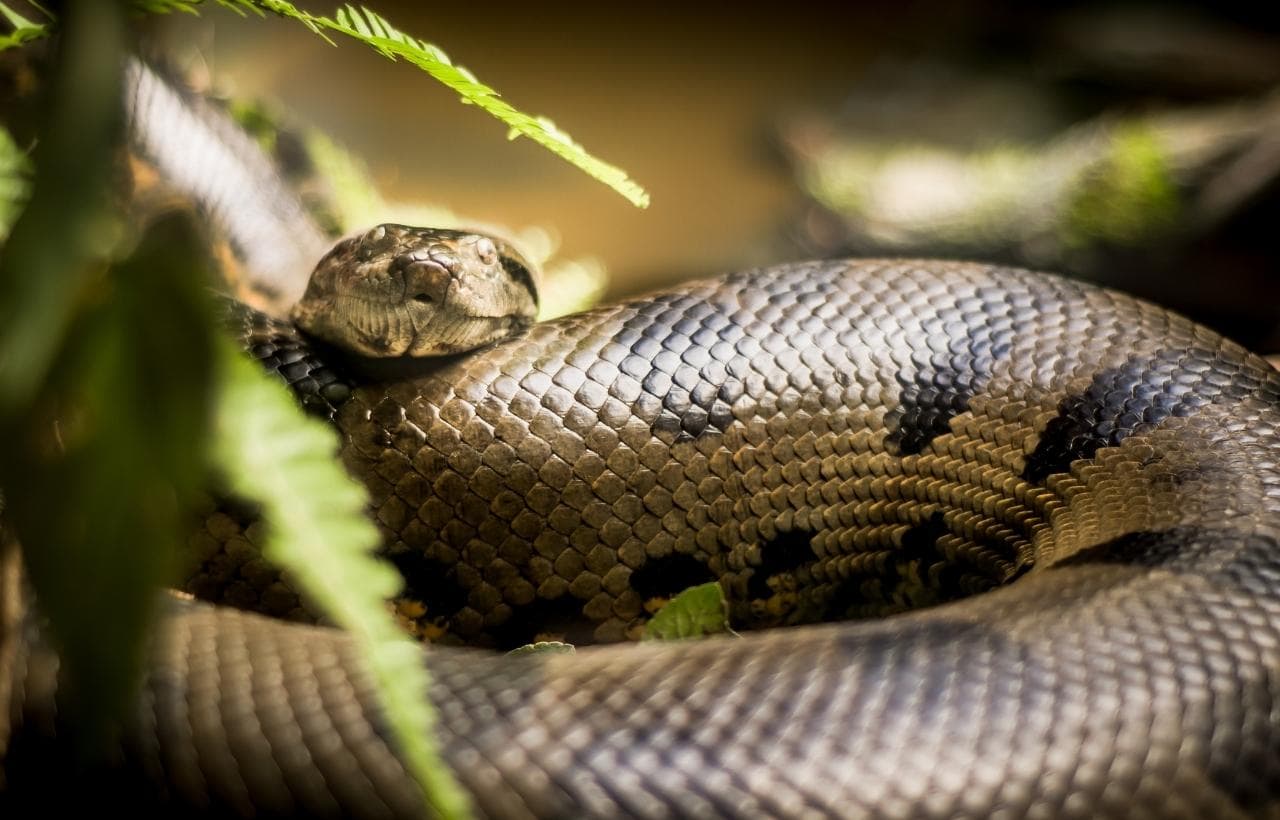
The Green Anaconda: South America’s Giant of the Swamps
When it comes to the world’s largest snakes, the green anaconda (Eunectes murinus) reigns supreme. Found deep in the swamps, marshes, and slow-moving rivers of South America, this serpentine giant is not only one of the heaviest snakes on Earth, but also one of the most powerful. Let’s dive into the murky waters of the Amazon and Orinoco basins to learn more about this incredible reptile.
A Colossal Serpent
The green anaconda is a member of the boa family and can grow up to 30 feet long, weigh over 500 pounds, and measure 12 inches in diameter. While stories of 30-foot specimens exist, most adult females (which are significantly larger than males) top out around 20 to 25 feet. Their olive-green coloration with black blotches helps them blend perfectly into muddy, vegetation-filled waters—a master of camouflage.
A Semi-Aquatic Predator
Anacondas are semi-aquatic, spending most of their lives in water. In fact, they’re so well adapted to aquatic life that they’re quite clumsy on land. But in water, their size becomes a massive advantage. Their eyes and nostrils are located on top of their heads, allowing them to lie in wait with most of their body submerged, invisible to prey.
What do they eat? Pretty much anything they can overpower. This includes:
- Fish
- Birds
- Capybaras
- Caimans
- Even jaguars (rarely)
Anacondas are non-venomous constrictors. They coil around their prey and squeeze until the animal suffocates, then swallow it whole, headfirst. Digestion can take days or even weeks, depending on the size of the meal.
Solitary and Mysterious
Green anacondas are generally solitary, except during the breeding season. Males may track a female for miles using scent cues. When several males find the same female, a breeding ball can form—a mass of writhing snakes where a dozen or more males compete to mate with a single female.
Interestingly, female green anacondas have been known to practice sexual cannibalism, consuming smaller males after mating. While rare, this behavior is thought to help females gain valuable nutrients for reproduction.
Reproduction and Birth
Green anacondas are ovoviviparous, meaning they give birth to live young rather than laying eggs. A female can birth anywhere from 20 to 40 live young at a time. These neonates are around 2 feet long at birth and are completely independent from the start, ready to swim, hunt, and survive on their own.
Myth vs. Reality
Thanks to exaggerated tales and horror movies, the green anaconda has become the stuff of legend. While it is a formidable predator, attacks on humans are extremely rare. These snakes prefer to avoid human contact, and their habitats are often remote and difficult to access.
Conservation Status
Currently, green anacondas are not considered endangered, but habitat loss and hunting (especially for their skins) do pose threats in some areas. Fortunately, much of their range is still relatively untouched wilderness.
Final Thoughts
The green anaconda is a fascinating apex predator, beautifully adapted to its watery world. It plays a crucial role in maintaining balance within its ecosystem, controlling populations of large prey animals. Far from being a mindless monster, this snake is a marvel of evolution and a true icon of the South American wild.
Did You Know?
Green anacondas can go weeks or even months without eating after a large meal!
Want more wild facts and deep dives into the world’s most incredible animals? Stick around and explore more with us!
More photos below ↓







Disclaimer: This blog post is for edutainment purposes only and may not be entirely accurate.






